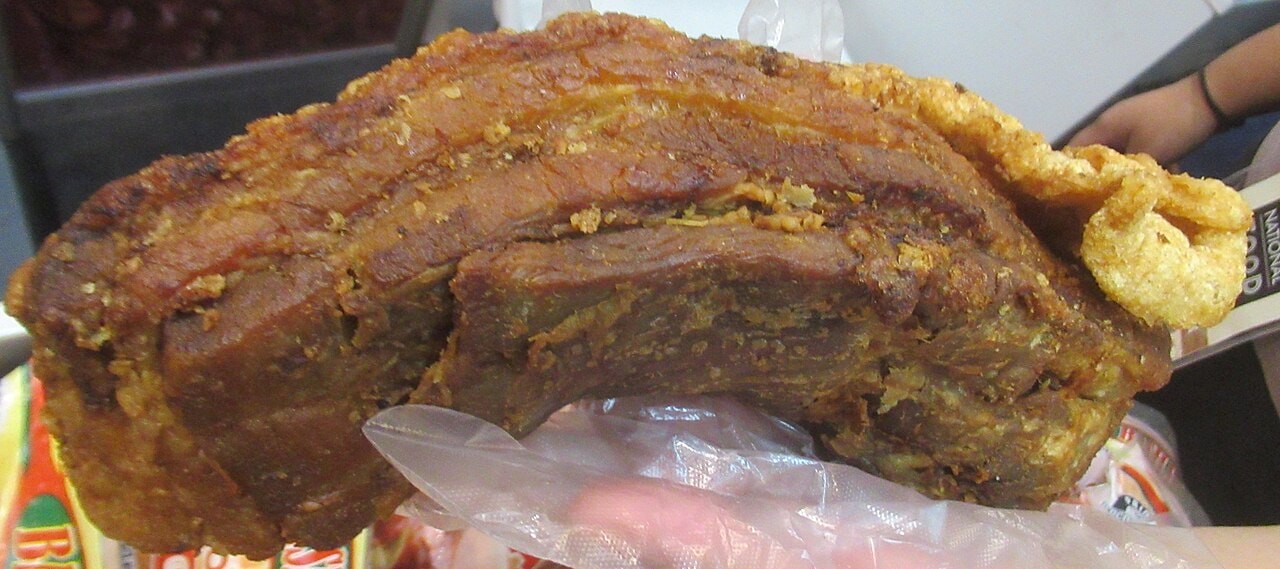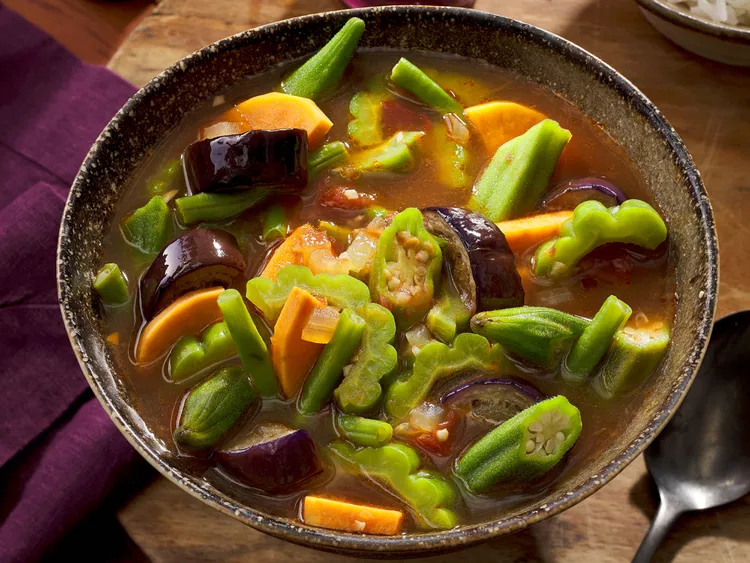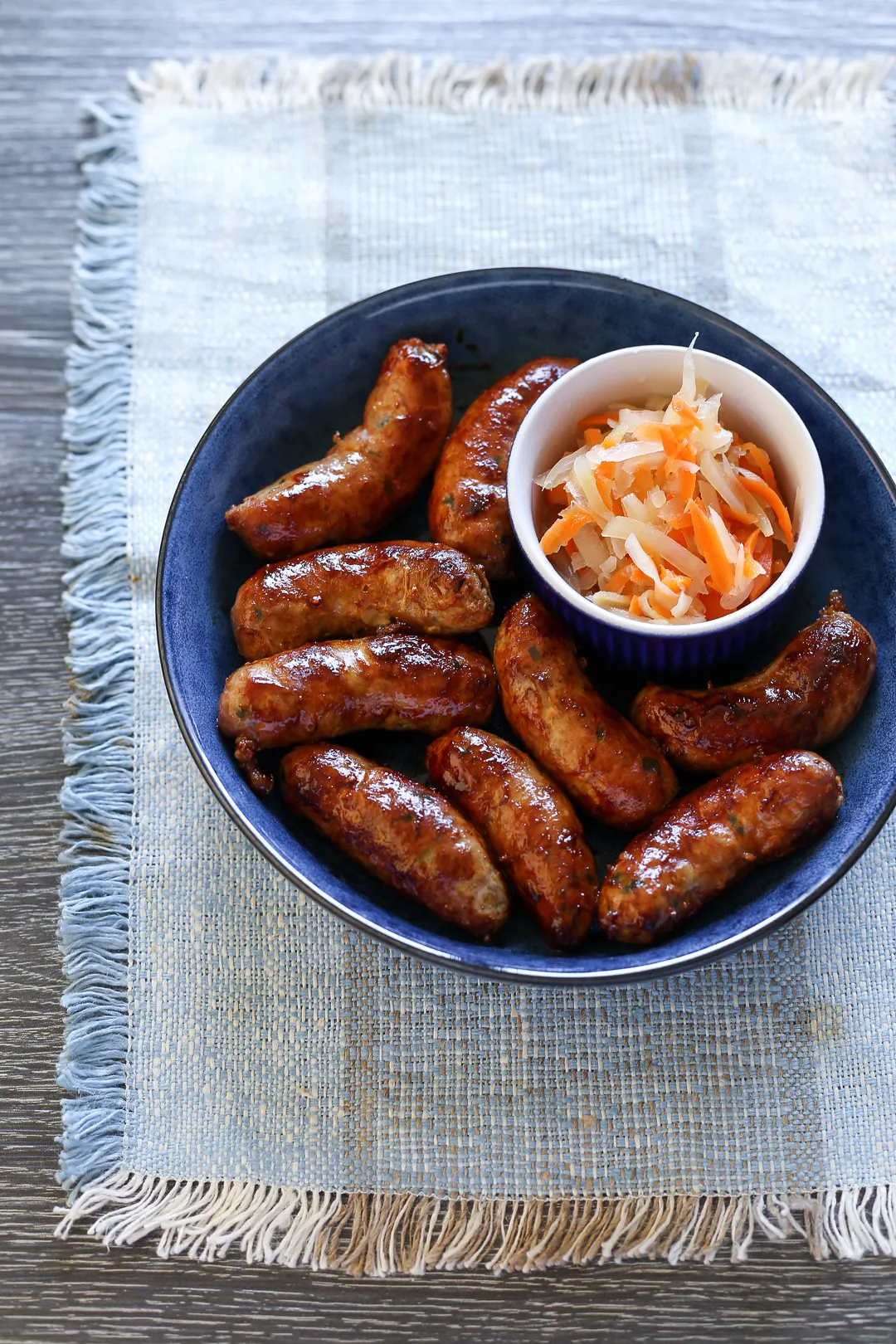
The Rich Culinary Heritage of the Ilocos Region
The Ilocos Region, located in the northern part of Luzon Island, has a culinary history shaped by geography, colonization, and resourcefulness. Because arable land in Ilocos Norte and Ilocos Sur is narrow and dry compared to other provinces, locals developed a cuisine centered on hardy crops.
Cooking methods also reflect both tradition and necessity: vegetables simmered over slow fire with coconut milk, or meat and pork cuts preserved and made into bagnet, which could last several days in the absence of refrigeration.
Over time, these practical choices gave birth to dishes that are now considered beloved dishes and native delicacies, prepared for special occasions and daily meals alike.
The Must-Try Dishes on Your Ilocos Food Trip
Street Food Staples
The streets of Vigan City and Batac City are famous for the perfect snacks that highlight both ingenuity and taste.

Image source: https://commons.wikimedia.org/wiki/File:Authentic_Empanada.jpg
Ilocos Empanada
Perhaps the most recognizable among the delicacies in Ilocos is the Ilocos empanada, a bright orange turnover made from rice flour dough mixed with annatto seeds.
It is filled with grated green papaya, green peas, egg, and pork meat or native sausage. The empanada is deep-fried until it develops a crunchy texture, then paired with spicy vinegar made from sukang Iloko.
Variants in Ilocos Norte (particularly Batac City) use more generous fillings of longganisa, while those in Vigan City offer a lighter style. Both versions have become a favorite snack for locals and tourists alike.
Pancit Lusay
A rare but historical noodle dish, pancit lusay, survives in parts of Vigan City. Cooked with soy sauce, shrimp paste, and small shrimps, it uses rice-based noodles and is often served with red onions. Though not as common as the empanada, it reflects the Chinese influence on local dishes in the north.
Beloved Ilocano Dishes
Hearty and enduring, these are the foods often served at home and during special occasions.

Image source: https://commons.wikimedia.org/wiki/File:Bagnet_of_Ilocos_CNE_04.jpg
Bagnet (Deep Fried Pork Belly)
Bagnet, from Ilocos Norte, is a deep-fried pork belly dish that closely resembles lechon kawali. It doubles as both a meal and preserved meat.
The pork is boiled, air-dried, then deep-fried repeatedly until it becomes deep-fried pork with a crisp outer layer. Historically, this method allowed households to store pork without refrigeration.
Bagnet is often served with Ilocos vinegar or sukang Iloko, making it a beloved dish and a cultural symbol of Ilocano thrift and flavor.
Dinuguan with Beef Innards
Unlike other Philippine versions, the Ilocano version of dinuguan, also called dinardaraan, uses beef innards or even internal organs, simmered with blood, garlic, and chili peppers.
This Ilokano dish highlights the no-waste philosophy of the region, turning off-cuts into a savory dish that excites the taste buds.

Image source: https://www.seriouseats.com/pinakbet-filipino-vegetable-stew-5190522
Pinakbet and Other Vegetable Dishes
Pinakbet is the quintessential Ilocano vegetable dish, made with bitter gourd, string beans, eggplant, sweet potato, and flavored with fermented fish sauce.
Over time, modern restaurants like the Hidden Garden or Grandpa’s Inn in Vigan City have created playful spinoffs, such as pinakbet pizza, where the classic vegetables are topped on dough and cheese.
Dinengdeng, another vegetable dish, is lighter, simmered with coconut milk and flavored with shrimp paste. These local dishes exemplify the balance of practicality and flavor.
Vigan Longganisa and Sausages
The native delicacies of Ilocos also include sausages, whose regional varieties distinguish Ilocos Sur from Ilocos Norte.

Image source: https://www.angsarap.net/2020/05/04/vigan-longganisa/
Vigan Longganisa
The Vigan longganisa, a native sausage from Vigan City, Ilocos, is known for its garlicky flavor and chunky texture. It is a famous food often eaten for breakfast with rice, fried egg, and dipped in sukang Iloko.
Visitors can taste it at restaurants like Cafe Leona or buy it from souvenir stores near Calle Crisologo. These sausages are a perfect meal, widely sold in local markets across the city.
Tourists often take them home as native delicacies, alongside basi and sugarcane juice products.
For residents of nearby communities such as Camella Ilocos and Camella Laoag, having access to authentic delicacies like Vigan longganisa is part of the everyday lifestyle, with markets and food hubs only a short trip away.”
Sweet Treats and Kakanin
The sweeter side of Ilocano food also shines through rice-based preparations, many tied to festivities.
Royal Bibingka
A signature rice cake from Ilocos Sur, the Royal Bibingka uses sticky rice and coconut milk, baked until firm and topped with butter, egg, and sometimes crushed chicharon for contrast. This sweet treat is a highlight of fiestas and a common purchase from souvenir stores in Vigan City.

Image source: https://yummykitchentv.com/special-royal-bibingka/
Tupig
In Ilocos Norte, especially around Batac City, tupig is made from ground sticky rice mixed with grated green papaya or green peas, sweetened with brown sugar, and wrapped in banana leaves before being roasted over coals.
This method gives it a smoky taste and chewy texture, making it one of the region’s native delicacies.
Drinks and Condiments
No discussion of Ilocano cuisine is complete without the liquids and dips that enhance each dish.
Sukang Iloko
Made from fermented sugarcane juice, sukang Iloko is central to Ilocano dining. Its sharp acidity balances the richness of pork dishes like bagnet or empanada.
Production methods, such as storing in burnay jars, have been passed down for centuries. It is widely sold in markets across the northern part of Luzon.
Basi and Sugarcane Drinks
Basi, the sugarcane wine of Ilocos, is brewed from boiled sugarcane juice, fermented with red onions and leaves for flavoring, then aged in earthen jars. When basi ferments too long, it becomes vinegar — the same Ilocos vinegar that makes its way to every household table.
Both basi and vinegar are part of rituals, celebrations, and everyday cooking, connecting food to community identity.
Conclusion
The delicacies in Ilocos showcase more than just flavors—they embody the traditions and resilience of the Ilocano people.
From the golden crunch of Ilocos empanada to the robust bite of Vigan longganisa, from hearty vegetable dishes like pinakbet to the crispy indulgence of deep-fried pork belly, the Ilocos Region offers a culinary experience that excites the taste buds and warms the heart.
Whether savoring a humble Ilocano dish at a roadside stall in Ilocos Sur, enjoying a feast in Laoag City, or dining at heritage restaurants like Cafe Leona in Vigan City, exploring Ilocano cuisine is a journey worth taking in the northern part of Luzon Island.

Celebrate Life’s Milestones in Camella!
House and Lot & Condominium for Sale in the Philippines

